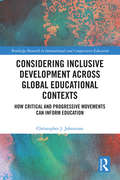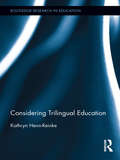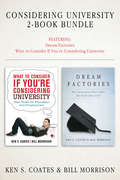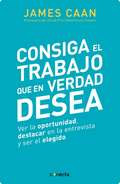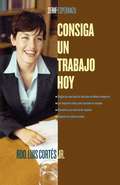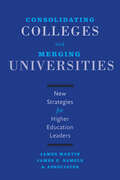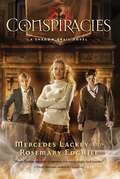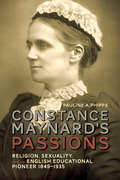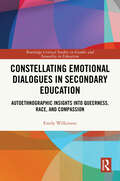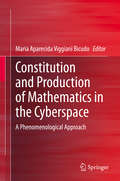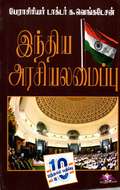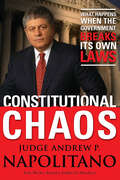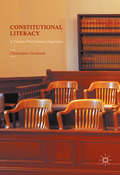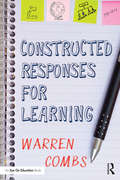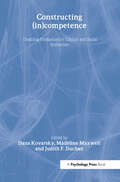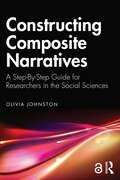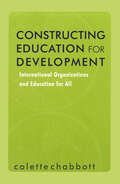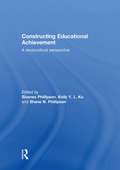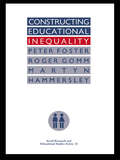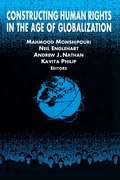- Table View
- List View
Considering Emotions in Critical English Language Teaching: Theories and Praxis
by Sarah BeneschGroundbreaking in the ways it makes new connections among emotion, critical theory, and pedagogy, this book explores the role of students’ and teachers’ emotions in college instruction, illuminating key literacy and identity issues faced by immigrant students learning English in postsecondary institutions. Offering a rich blend of, and interplay between, theory and practice, it asks: How have emotions and affect been theorized from a critical perspective, and how might these theories be applied to English language teaching and learning? What do complex and shifting emotions, such as hope, disappointment, indignation, and compassion, have to do with English language teaching and learning in the neoliberal context in public universities? How might attention to emotions lead to deeper understanding of classroom interactions and more satisfying educational experiences for English language teachers and students? These questions are addressed not just theoretically, but also practically with examples from college classes of assigned readings, student writing, and classroom talk in which various emotions came into play. Thought-provoking, accessible, and useful, this is a must-read book for scholars, students, and teachers in the field of English language teaching.
Considering Inclusive Development across Global Educational Contexts: How Critical and Progressive Movements can Inform Education (Routledge Research in International and Comparative Education)
by Christopher J. JohnstoneThis volume charts the rise of the concept of "inclusive development" and simultaneously recognizes its problematic implications as it shifts the focus of development work from efficiency to justice. In response to increasing awareness that development projects can all too often lead to the exclusion of marginalized populations, Considering Inclusive Development across Global Educational Contexts sets out to foreground trends and experiences that can inform socially just approaches to development. Structured in three parts, the volume explores several educational themes - aid and development, the human-environment nexus, and economic redistribution. Chapters look in detail at how approaches in these areas can help or hinder inclusive educational development globally, and highlight representative, critical, and relational models of inclusive development that can more strongly inform education by/from broader development trends. This timely volume will be of interest to academics, researchers, and post-graduate students in the fields of education development, inclusivity, and sustainable development. This book would also benefit graduate students and scholars in development education.
Considering Trilingual Education (Routledge Research in Education)
by Kathryn Henn-ReinkeBased in case studies conducted in the US, Europe, and Latin America, this book explores the feasibility and benefits of trilingual/ multilingual education in the United States. Currently, there are few programs in the country of this nature, as educators tend to conclude that English-language learners would be overwhelmed by study in additional languages. Henn-Reinke builds an argument supporting trilingual education in the US, discussing issues of identity, curriculum, pedagogy, and the impact of other psycho-socio-linguistic factors.
Considering University 2-Book Bundle: Dream Factories / What to Consider If You're Considering University
by Ken S. Coates Bill MorrisonThis two-book bundle is an essential handbook for any student or parent considering university. Learn why a degree is no longer a passport to success in today's job market. Includes: Dream Factories The “good jobs” of the past are almost gone. Today, many university graduates face unemployment while others face underemployment. Professors Ken Coates and Bill Morrison explore the death of the “good job,” and the role that universities have played in the disconnect between career fantasies and realities. What to Consider If You're Considering University If you listen to the general chatter from parents, guidance counsellors, and politicians, you would think that going to university is the only option that ensures future success. That's no longer true. This book is designed to help anyone under thirty make the best possible educational and career choices.
Consiga el trabajo que en verdad necesita
by James CaanCon una situación del mercado de trabajo tan difícil, más que nunca es necesario detectar las oportunidades realmente interesantes, destacar por encima de los demás, y contar con la mejor estrategia para conseguir su objetivo. Consiga el trabajo que en verdad desea le muestra, paso a paso, cómo mantener una actitud positiva frente a las dificultades, destacar para conseguir una entrevista y, una vez ahí, desplegar toda su capacidad y pasión, hasta conquistar ese puesto que siempre ha deseado.«Magníficos consejos de principio a fin. Lo recomendamos a todos nuestros candidatos.»Keith Potts, director ejecutivo, Jobsite
Consiga un trabajo hoy (How to Write a Resume and Get a Job)
by Luis CortesConsiga Un Trabajo Hoy Encontrar un empleo puede ser una tarea estresante. Hasta resulta difícil saber por dónde comenzar. ¿Dónde están las listas de empleos? ¿Qué destrezas se requieren? ¿Cómo puede hacer que su hoja de vida se destaque? La búsqueda de un empleo conlleva muchas reglas que usted no puede quebrantar, y es fácil que inadvertidamente usted reduzca sus oportunidades. En Consiga un trabajo hoy, el Rdo. Luis Cortés le brinda a usted la información necesaria para obtener un empleo prometedor. Este libro lo conduce paso a paso a través de todo el proceso, desde la búsqueda y la solicitud de empleo, hasta la negociación de un mejor salario y la petición de beneficios. Un empleo no lo es todo en la vida, pero sí la llave de un futuro mejor. Este libro le garantiza que su búsqueda será exitosa.
Consolidating Colleges and Merging Universities: New Strategies for Higher Education Leaders
by James Martin James E. SamelsIn the midst of falling enrollments and endowments, university leaders consider partnering, merging, and even closing institutions.Since the economic recession of 2008, colleges and universities have looked for ways to lower costs while increasing incomes. Not all have succeeded. Threatened closures and recent institutional mergers point to what might be a coming trend in higher education. The long-term economic weakness of colleges and universities means schools need to become more strategic about how they consider previously unthinkable options. This provocative book will be their indispensable guide to managing the crisis.In Consolidating Colleges and Merging Universities, James Martin and James E. Samels bring together higher education leaders to talk about something that few want to discuss: how institutions might cooperate with their competitors to survive in this economic climate. Barring that, Martin and Samels argue, some will shutter their campuses. But closing, they emphasize, is a complex process that involves more than just sending the students home and turning off the lights. The first one-volume resource for presidents, trustees, provosts, chief financial officers, and faculty leaders planning to partner, merge, or close a college or university, the book offers specific guidelines and action steps used successfully to create multiple forms of partnership between higher education institutions. The book includes contributions by twenty nationally recognized leaders in partnership and strategic planning, as well as an appendix detailing key college and university mergers and closures since 2000. Each chapter includes informative responses from practitioners who answer the question, "What is the single most important lesson you would share with a planning team designing a partnership or merger this year?" Responding to many daunting questions now being raised nationally about institutional fragility and sustainability, Consolidating Colleges and Merging Universities is an honest and practical guide to the possibilities and pitfalls of downsizing American higher education.
Consorting And Collaborating In The Education Market Place (Education Policy Perspectives Ser. #No.37)
by Chris Husbands David BridgesThis text offers descriptions and analyses of some of the different ways in which schools and other educational institutions have started to establish new collaborative relationships in today's competitive educational marketplace. Using case studies, the book describes examples of such collaborative structures.; Educational consortia have been established as a vehicle for professional and curriculum development, as a source of mutual support and as a condition of mutual survival. As the "LEA monopolies" have been forced to shed many of their traditional functions or schools have opted out, schools have found it necessary to re-create parts of their collaborative structures out of sheer self- Interest.; For Some Educators Who Continue To Be Attached To Notions Of "an educational service" and professional collegiality in the provision of such a service, inter-institutional collaboration becomes seen as something to be valued independently of the instrumental benefits which it provides. For this variety of reasons, consortium working and collaborative structures seem set to develop in spite of, or as a necessary antodote to, educational markets. Understanding the role and operation of such structures is a necessity for educational managers in all parts of the educational service.
Conspicuous in His Absence: Studies in the Song of Songs and Esther
by Chloe T. SunIn the biblical canon, two books lack any explicit reference to the name of God: Song of Songs and Esther. God's peculiar absence in these texts is unsettling, both for theological discourse and for believers considering implications for their own lived experience. Chloe T. Sun takes on the challenges of God's absence by exploring the often overlooked theological connections between these two Old Testament books. In Conspicuous in His Absence, Sun examines and reflects on the Song of Songs and Esther using theological interpretation. She addresses three main questions: What is the nature of God as revealed in texts that don't use his name? How do we think of God when he is perceived to be absent? What should we do when God is silent or hidden? The experience of God's absence or silence is an important part of the human condition. By exploring the distinct themes and perspectives of Song of Songs and Esther, as well as how they've been received in Jewish and Christian history, Sun demonstrates how both books serve as counter texts to the depiction of God and his work in the rest of the Hebrew Scriptures. Thus both contribute to a fuller picture of who God is and what it means to know him.
Conspiracies (Shadow Grail #2)
by Rosemary Edghill Mercedes LackeyThe second book in the Shadow Grail series by the New York Times, USA Today, and Publishers Weekly bestselling authors Mercedes Lackey and Rosemary Edghill Spirit and her friends Burke, Loch, Muirin, and Addie have managed to defeat the evil force that has been killing students at Oakhurst Academy for the past forty years--or so they think. When a series of magical attacks disrupts the school, Doctor Ambrosius calls upon alumnus Mark Rider to secure the campus--and start training the students for war. The only student without magic, Spirit doesn't trust Mark or his methods. She knows that Oakhurst isn't safe. And if Spirit and her friends want to live long enough to graduate, they have to find out what is really going on--before it's too late.
Constance Maynard's Passions
by Pauline A. PhippsSuccessful but self-tormented, English educational pioneer Constance Maynard (1849-1935) was a deeply religious evangelical Christian whose personal atonement theology demanded that one resist carnal feelings to achieve personal salvation. As the founder of Westfield College at the University of London, Maynard championed women's access to a university education. As the college's first principal, she also engaged in a string of passionate relationships with college women in which she imagined love as God's gift as well as a test of her faith.Using Maynard's extensive personal papers, especially her diaries and autobiography, Pauline A. Phipps examines how the language of her faith offered Maynard the means with which to carve out an independent career and to forge a distinct same-sex sexual self-consciousness in an era when middle-class women were expected to be subservient to men and confined to the home. Constance Maynard's Passions is the fascinating account of a life which confounds the usual categories of faith, gender, and sexuality.
Constellating Emotional Dialogues in Secondary Education: Autoethnographic Insights into Queerness, Race, and Compassion (Routledge Critical Studies in Gender and Sexuality in Education)
by Emily WilkinsonThis innovative, autoethnographic study examines 12 stories of “wobble” moments—looking at “wobble” as an emotional experience—to illuminate new perspectives on LGBTQIA+ identity, school violence, racism, mental illness in students and teachers, and the emotional costs of empathy.Utilizing the author’s experiences as they navigate education’s most difficult years of practice from 2020 to 2022 and extending the existing scholarship on dialogical pedagogy and teacher identity by offering a framework that goes “beyond wobble,” it provides a new theory for how teachers can deconstruct the emotions that surround the heaviest moments of their practice, shift perspectives on situations and selves, and “see the light” of compassionate possibility in both person and practice.A sobering inquiry which provides valuable insight into the emotional landscape of a contemporary classroom embroiled in America’s culture wars and serves as a poignant exemplar of dialogical pedagogy in practice, it will appeal to scholars and post-graduate students of teacher education, educational psychology, and education policy.
Constitution and Production of Mathematics in the Cyberspace: A Phenomenological Approach
by Maria Aparecida Viggiani BicudoThis book brings together various studies that assume phenomenology to analyze how mathematics education is affected by the experience of being in the cyberspace. The authors of the chapters included in this contributed volume work with the theoretical framework developed by authors such as Edmund Husserl, Martin Heidegger and Maurice Merleau-Ponty to investigate how mathematics is produced and comprehended in a new way of being in the world, with digital technologies. The aim of this book is not to explain the tools used and how one works with them in the cyberspace, aiming at better teaching and learning mathematics. Its purpose is to present philosophical investigations that contribute to the understanding of the complexity of the world in which we are being researchers and mathematics teachers. By doing so, Constitution and Production of Mathematics in the Cyberspace – A Phenomenological Approach will help researchers and mathematics teachers understand their role in a world in which the experience of teaching and learning mathematics is being radically changed by new technologies and new ways of being in this world.
Constitution of India - Indian Polity: இந்திய அரசியலமைப்பு - இந்திய அரசியல்
by Professor Dr. K. Venkatesanபுத்தகம், "இந்திய கட்சி உரை," கொடுக்கப்பட்ட விஷயங்களை பொருந்துகின்ற அரசியல் அமைப்பின் பல பகுதிகளை விளக்கப்படுத்துகின்றது. இந்த புத்தகம், அரசு பிரிவிலும், பத்திரிகை பிரிவிலும், கல்வி பிரிவிலும், நீதி பிரிவிலும், கூட்டமைப்புக் கோரிக்கையாளர்களும், பொது மக்களும் உள்ளனர் என்று அனைத்தும் பயன்படுவதை நேரிலேயே உணர்ந்து கொள்கின்றது. இந்த புத்தகம், இந்திய அரசியல் அமைப்பின் உரிமைகளை உள்ளடக்கி விளக்குகின்றது. அதனால், இது அரசியல் அமைப்பின் அனைத்து அமைப்புகளையும் விளக்கினாலும் முக்கிய அமைப்புகளை உள்ளடக்கி விளக்குகின்றது.
Constitutional Chaos: What Happens When the Government Breaks Its Own Laws
by Andrew P. NapolitanoIn this incisive and insightful book, Judge Andrew P. Napolitano peels back the legal veneer and shows how politicians, judges, prosecutors, and bureaucrats are trampling the U.S. Constitution in the name of law and order and fighting terrorism. Napolitano reveals how they:silence the First Amendmentshoot holes in the Secondbreak some laws to enforce othersentrap citizenssteal private propertyseize evidence without warrantimprison without chargekill without causePundits on the right, left, and center have praised Constitutional Chaos for its penetrating examination of our rights and liberties in the post-9/11 world."Has the war on terrorism taken away some of your rights? In a non-ideological way, Judge Andrew P. Napolitano answers that crucial question. This book will open your eyes."-Bill O'Reilly"This book is a wake-up call for all who value personal freedom and limited government."-Rush Limbaugh"In all of the American media, Judge Napolitano is the most persistent, uncompromising guardian of both the letter and the spirit of the Constitution. . ."-Nat HentoffJudge Andrew P. Napolitano is Fox News Channel's senior judicial analyst, seen by millions on The Big Story with John Gibson, The O'Reilly Factor, Fox and Friends, and other shows. Hisarticles and commentaries have been published in the Wall Street Journal, Los Angeles Times, St. Louis Post-Dispatch, Newark Star Ledger, and other national publications.
Constitutional Literacy: A Twenty-First Century Imperative
by Christopher DreisbachThis book considers the status of constitutional literacy in the United States along with ways to assess and improve it. The author argues that pervasive constitutional illiteracy is a problem for both law enforcement agencies and for ordinary citizens. Based on the author's decades of teaching in law enforcement agencies around the country, this book argues for the moral and pragmatic value of constitutional literacy and its application in twenty-first century society.
Constitutional of Nepal 2015
by Secretariate of Constitutional Assembly of Nepalनेपालको संविधान २०७२ संविधानसभा सचिवालय सिंहदरबार, काठमाडौं । यो पहुँचयुक्त ई-पुस्तक दृष्टिविहिन तथा छापा अक्षर पढ्न बाधा भएका अपाङ्गता भएका व्यक्तीहरूको निशुल्क उपलब्धताको लागी एड्राड्-नेपालले तयार गरेको हो ।
Constructed Responses for Learning
by Warren CombsTeaching students to write constructed responses does not have to become a test-prep chore. An intentional routine of constructed responses provides powerful opportunities to teach strategic thinking through writing that also deepens students’ knowledge about core subjects. In this clear guide from education consultant Warren Combs, you’ll learn how and why to teach students to write these short essays, no matter what subject or grade level you teach. Special features: Writing prompts that are based on Webb’s Depth of Knowledge (DOK) and provide practice for students at all skill levels Practical strategies to build critical thinking and improve students’ writing, including sentence stems, acrostics, framed stories, analogies, and quad clusters Student self-assessment guidelines and rigorous peer-response strategies An interactive log to help you manage best practices and keep students engaged Reading-Writing Modules to help you review and implement the instructional practices and strategies Sample student work, at different levels, with analysis Throughout the book, you’ll find handy tools such as rubrics, logs, and checklists. These tools are also available as free eResources on our website, www.routledge.com/9781138931046, so you can download and print them for immediate use.
Constructing (in)competence: Disabling Evaluations in Clinical and Social interaction
by Judith Felson Duchan Dana Kovarsky Madeline MaxwellCompetence and incompetence are constructs that emerge in the social milieu of everyday life. Individuals are continually making and revising judgments about each other's abilities as they interact. The flexible, situated view of competence conveyed by the research of the authors in this volume is a departure from the way that competence is usually thought about in the fields of communication disabilities and education. In the social constructivist view, competence is not a fixed mass, residing within an individual, or a fixed judgment, defined externally. Rather, it is variable, sensitive to what is going on in the here and now, and coconstructed by those present. Constructions of competence are tied to evaluations implicit in the communication of the participants as well as to explicit evaluations of how things are going. The authors address the social construction of competence in a variety of situations: engaging in therapy for communication and other disorders, working and living with people with disabilities, speaking a second language, living with deafness, and giving and receiving instruction. Their studies focus on adults and children, including those with disabilities (aphasia, traumatic brain injury, augmentative systems users), as they go about managing their lives and identities. They examine the all-important context in which participants make competence judgments, assess the impact of implicit judgments and formal diagnoses, and look at the types of evaluations made during interaction. This book makes an argument all helping professionals need to hear: institutional, clinical, and social practices promoting judgments must be changed to practices that are more positive and empowering.
Constructing Composite Narratives: A Step-By-Step Guide for Researchers in the Social Sciences
by Olivia JohnstonThis book provides the first instructional guide to composite narrative research methods. Composite narratives are short vignettes that weave together quotes from multiple participants. The effect is to convey meaning to both academics and end-users, disseminating research findings succinctly and effectively. Readers interested in writing composite narratives will find a complete guide in this book.More and more researchers are using composite narratives to present their research findings, with support for the effectiveness of composite narratives as a research method growing. Inside this book, there is a rationale for why to use composite narratives and a complete guide for how to write them. Many examples from the author are provided, complete with audit trails that evidence how the composite narratives were written from the raw qualitative research data.Social science researchers at all career stages will be able to use this book to justify and construct composite narratives. Beginning with a discussion of this background, the proposed book will offer research students, supervisors, and experienced academics a manual for how and why to use composite narratives in social sciences research. The intended audience includes qualitative researchers in the social sciences.
Constructing Education for Development: International Organizations and Education for All (Reference Books in International Education)
by Colette ChabbottFirst published in 2003. Routledge is an imprint of Taylor & Francis, an informa company.
Constructing Educational Achievement: A sociocultural perspective
by Shane N. Phillipson Sivanes Phillipson Kelly Y. L. KuInternational interest focuses on why pupils from East-Asia tend to outperform pupils from the West and scholars have proposed a number of possible explanations to account for these international trends. Using Vygotsky's theory (1978) as a conceptual framework to "construct" school achievement, this book puts forward culturally relevant context for understanding developmental aspects of children’s school achievement and their implication to classroom practice and education progress. Converging the two important lines of inquiry – the child factor and the sociocultural factor – this book showcases evidence-based scholarly works from across the globe that shed light on causes of academic achievement in different contexts. The book brings together eminent scholars from early childhood, primary education, secondary and vocational education who expertly capture the vitality of development and processes of specific child factors and their interaction with their environment that explain their school achievement. Foregrounded in the five planes of cultural historical, institutional, social, personal and mental, the research explain how children think, learn and form the will to perform amidst the changing social and family environment, and challenging school and educational environment.
Constructing Educational Inequality: A Methodological Assessment
by Martyn Hammersley Roger Gomm Peter FosterThe issue of educational opportunity has long been of public concern and a major focus for eduational research. As a result, there is now a substantial body of research findings in this field, both quantitative and qualitative.; This work relates to various levels of the educational system and to different categories of student, but particularly social class, gender, ethnicity and race. The central trend has been to find persisting inequalities despite reform at system, institutional and classroom levels. Furthermore, the educational system is frequently portrayed as playing a key role in reproducing wider social and economic inequalities.; This book examines the status of educational inequality as a social problem, explores the conceptual issues surrounding it, assesses a representative sample of recent research, and seeks to clarify the relevant methodological ground rules, thereby laying the basis for future research in the field.
Constructing History 11-19
by Hilary Cooper Arthur ChapmanThis book describes and exemplifies strategies for teaching history across the 11-19 age range in rigorous and enjoyable ways. It illustrates active learning approaches embedded in pupil-led enquiries, through detailed case studies which involve students in planning and carrying out historical enquiries, creating accounts and presenting them to audiences, in ways that develop increasingly sophisticated historical thinking. The case studies took place in a number of different localities and show how practising teachers worked with pupils during each year from Y6/7 to Y 13 to initiate, plan and implement enquiries and to present their findings in a variety of ways. Each case study is a practical example which teachers can use as a model and modify for their own contexts, showing how independent learning linked to group collaboration and peer assessment can enhance learning. Social constructivist theories of learning applied to historical thinking underpin the book, with particular emphasis on links between personalised and collaborative learning and e-learning.
Constructing Human Rights in the Age of Globalization (International Relations In A Constructed World Ser.)
by Andrew J. Nathan Mahmood Monshipouri Neil Englehart Kavita PhilipBoth human rights and globalization are powerful ideas and processes, capable of transforming the world in profound ways. Notwithstanding their universal claims, however, the processes are constructed, and they draw their power from the specific cultural and political contexts in which they are constructed. Far from bringing about a harmonious cosmopolitan order, they have stimulated conflict and opposition. In the context of globalization, as the idea of human rights has become universal, its meaning has become one more terrain of struggle among groups with their own interests and goals. Part I of this volume looks at political and cultural struggles to control the human rights regime -- that is, the power to construct the universal claims that will prevail in a territory -- with respect to property, the state, the environment, and women. Part II examines the dynamics and counterdynamics of transnational networks in their interactions with local actors in Iran, China, and Hong Kong. Part III looks at the prospects for fruitful human rights dialogiue between competing universalisms that by definition are intolerant of conradiction and averse to compromise.

